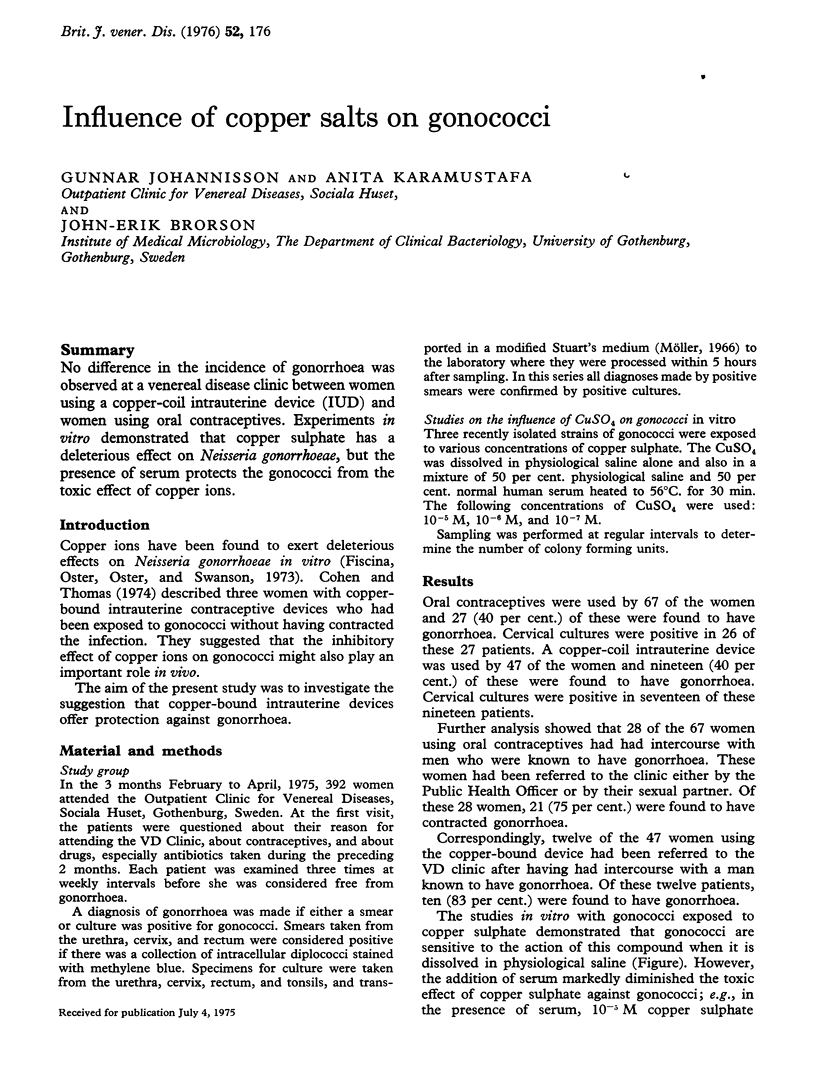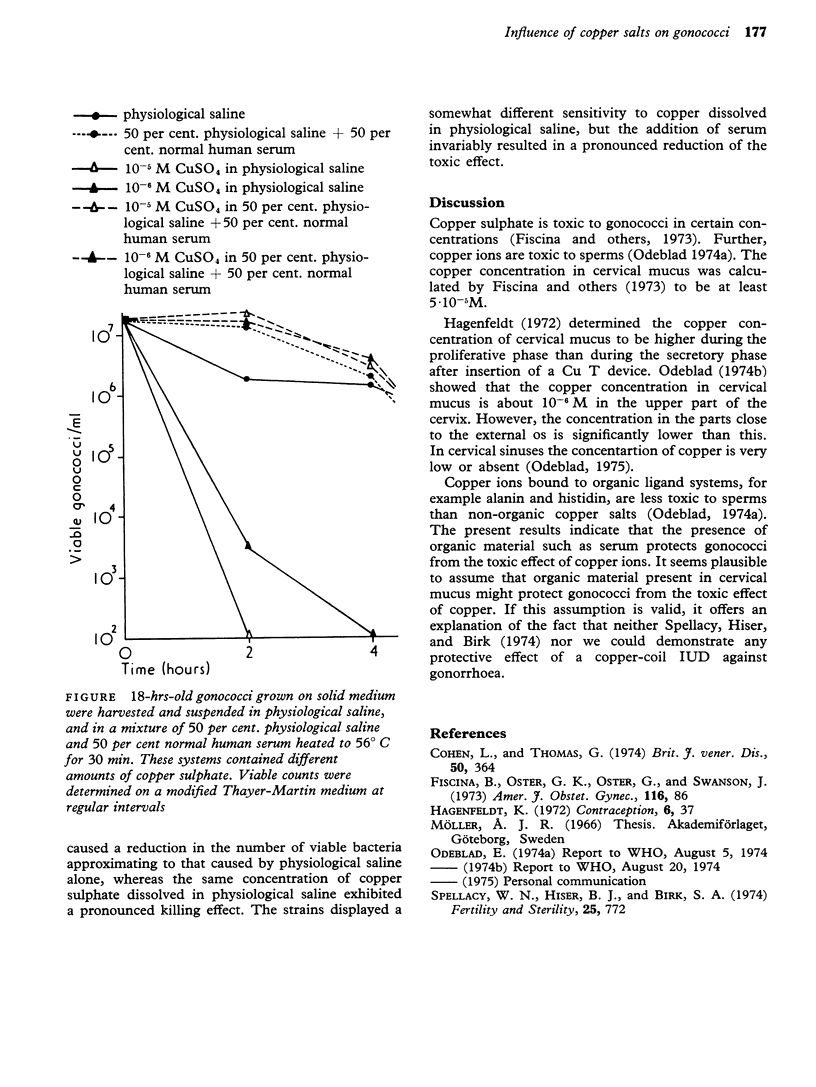Abstract
No difference in the incidence of gonorrhoea was observed at a venereal disease clinic between women using a copper-coil intrauterine device (IUD) and women using oral contraceptives. Experiments in vitro demonstrated that copper sulphate has a deleterious effect on Neisseria gonorrhoeae, but the presence of serum protects the gonococci from the toxic effect of copper ions.
Full text
PDF

Selected References
These references are in PubMed. This may not be the complete list of references from this article.
- Cohen L., Thomas G. Copper versus the gonococcus in vivo. Br J Vener Dis. 1974 Oct;50(5):364–366. doi: 10.1136/sti.50.5.364. [DOI] [PMC free article] [PubMed] [Google Scholar]
- Hagenfeldt K. Intrauterine contraception with the copper-T device. Effect on trace elements in the endometrium, cervical mucus and plasma. Contraception. 1972 Jul;6(1):37–54. doi: 10.1016/s0010-7824(72)80004-0. [DOI] [PubMed] [Google Scholar]
- Spellacy W. N., Hiser B. J., Birk S. A. The effect of copper intrauterine devices on endocervical gonococcal cultures. Fertil Steril. 1974 Sep;25(9):772–773. [PubMed] [Google Scholar]


